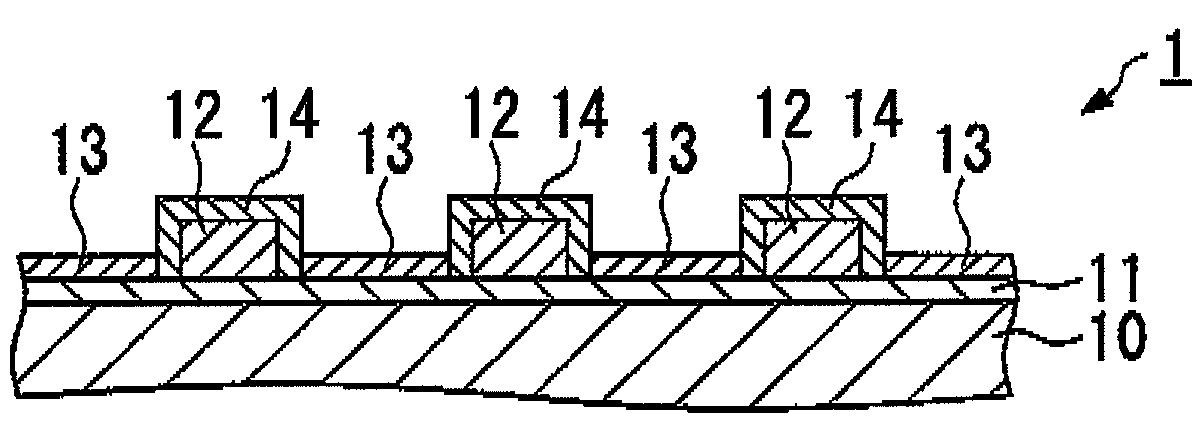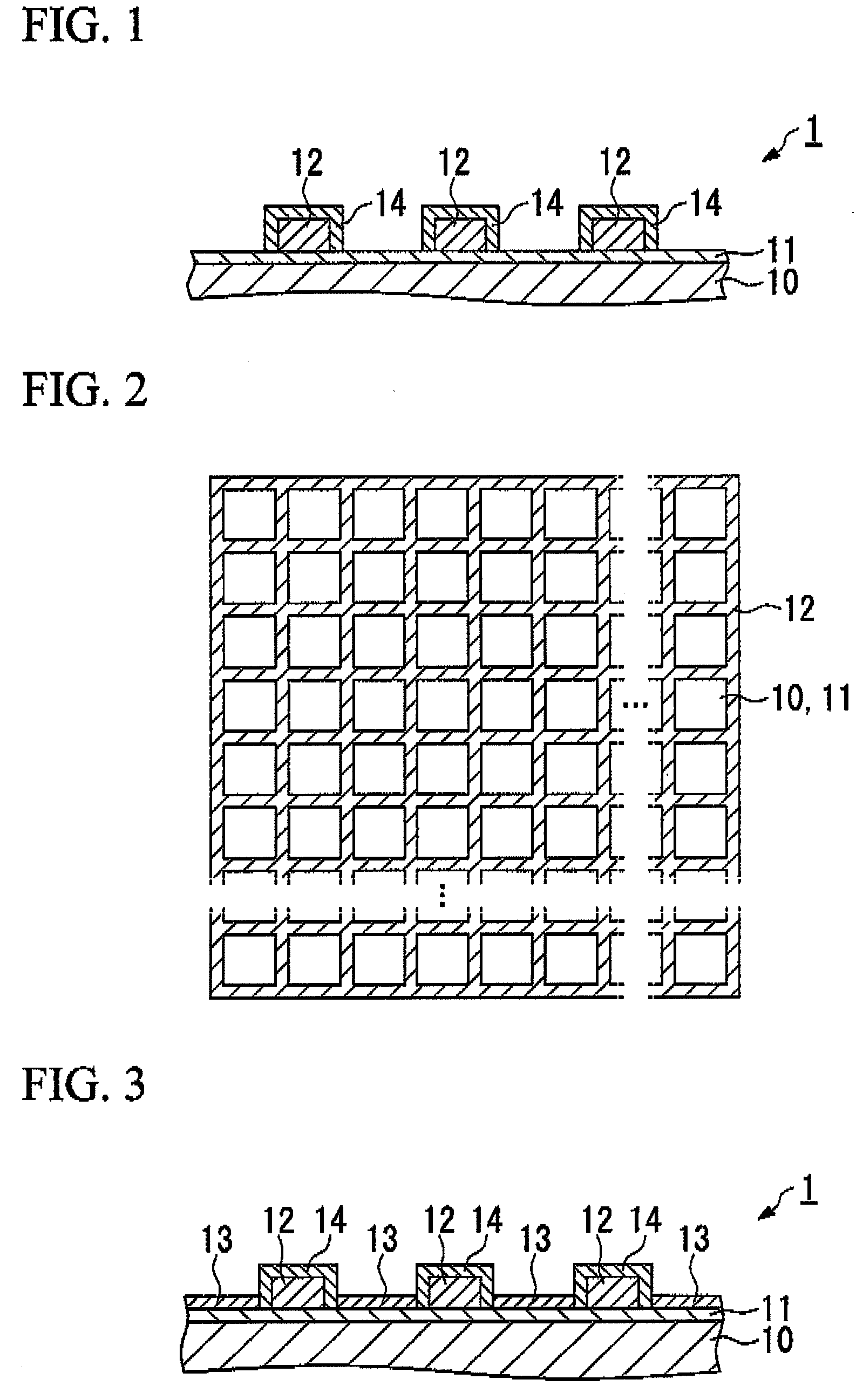Method of manufacturing electrode substrate, electrode substrate, photoelectric conversion element, and dye-sensitized solar cell
- Summary
- Abstract
- Description
- Claims
- Application Information
AI Technical Summary
Benefits of technology
Problems solved by technology
Method used
Image
Examples
example 1
[0087]The electrode substrate shown in FIG. 1 was manufactured by the following procedure.
[0088]First, indium trichloride tetrahydrate and tin dichloride dihydrate are dissolved in ethanol to make a raw material solution for the ITO film. Also, a saturated water solution of ammonium fluoride was added and dissolved in an ethanol solution of tin tetrachloride pentahydrate to make a raw material solution for the FTO film. Next, the base substrate 10 made of glass A shown in Table 1 and having a dimension of 140 mm×140 mm and a thickness of 2.8 mm was placed on a heater plate to be heated. In this state, the raw material solution for the ITO film was sprayed on the base substrate 10 using a spray nozzle to form an ITO film with a film thickness of 800 nm, and then the raw material solution for the FTO film was sprayed on the base substrate 10 using a spray nozzle to form an FTO film with a film thickness of 200 nm, whereby the transparent conductive layer 11 which is a composite film o...
example 2 to example 11
[0091]The electrode substrates of Example 2 to Example 11 were obtained similarly to the electrode substrate 1 except for using a base substrate, an insulating layer and a sintering apparatus shown in Example 2 to Example 11 of Table 1 and adopting the heat treatment temperature shown in Example 2 to Example 11 of Table 1 (the top temperature keep time in the low-melting glass B was 15 minutes).
[0092]In each of Example 1 to Example 11, ten electrode substrates obtained in this manner were prepared, and, as shown below, the deformation of the base substrate 10, the cracking of the base substrate 10, and the density of the insulating layer 14 were investigated. The results are shown, in Table 2.
TABLE 2Example (ElectrodeSubstrate)Deformed (%)Cracked (%)Density100Good200Good300Good400Good500Good600Good700Good88020Good96040Good101000Good1100Bad
Deformation of the Base Substrate 10
[0093]The length of each of the four sides of the base substrate 10 is measured before and after the heat trea...
example 12
[0101]The electrode substrate of Example 12 was obtained similarly to the electrode substrate 1 except for using the base substrate shown in Example 12 of Table 1 and not providing the metal wiring layer 12 and the insulating layer 14.
PUM
| Property | Measurement | Unit |
|---|---|---|
| Temperature | aaaaa | aaaaa |
| Strain point | aaaaa | aaaaa |
| Strain point | aaaaa | aaaaa |
Abstract
Description
Claims
Application Information
 Login to View More
Login to View More - R&D
- Intellectual Property
- Life Sciences
- Materials
- Tech Scout
- Unparalleled Data Quality
- Higher Quality Content
- 60% Fewer Hallucinations
Browse by: Latest US Patents, China's latest patents, Technical Efficacy Thesaurus, Application Domain, Technology Topic, Popular Technical Reports.
© 2025 PatSnap. All rights reserved.Legal|Privacy policy|Modern Slavery Act Transparency Statement|Sitemap|About US| Contact US: help@patsnap.com



